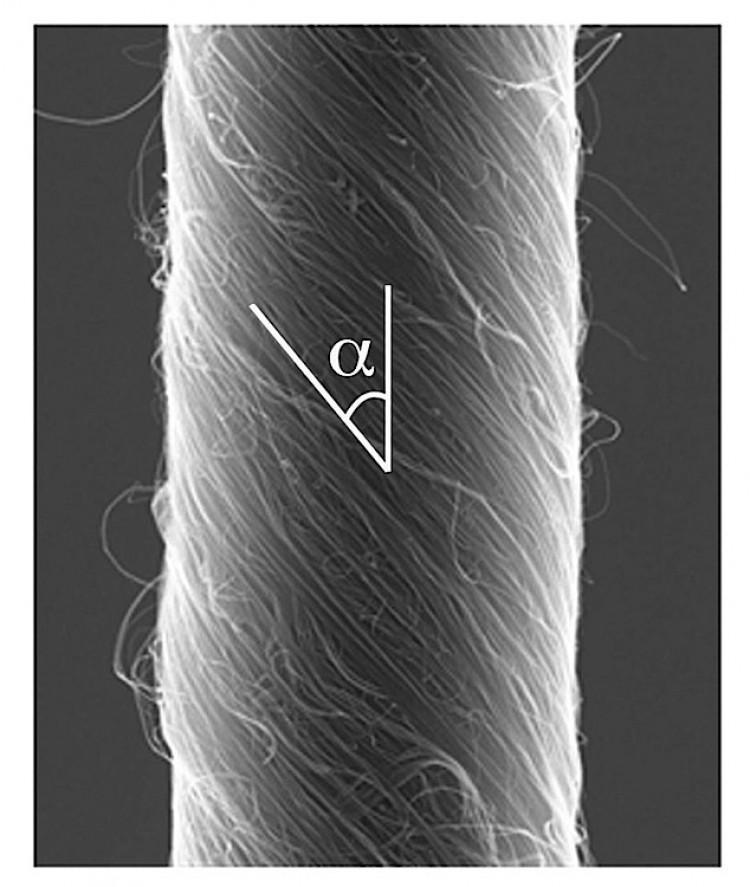Flexing Carbon Nanotube Motor Mimics Muscles
A more durable flexible alternative to the electric motor has been created by spinning lengths of microscopic carbon nanotubes (CNT) into muscle-like yarns that twist like an elephant’s trunk.

Scanning electron micrograph image of a 3.8-micron diameter carbon nanotube yarn that functions as a torsional muscle when filled with an ionically conducting liquid and electrochemically charged. The angle indicates the deviation between nanotube orientation and yarn direction for this helical yarn. University of Texas at Dallas
|Updated:




